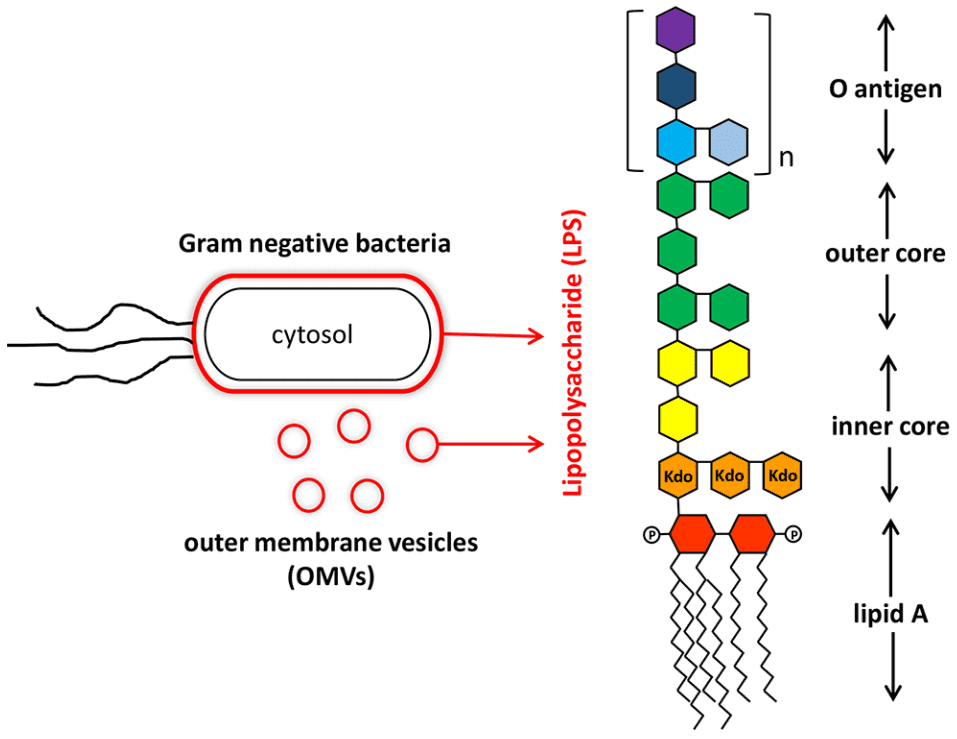


CD BioGlyco has rich experience in the purification and structural analysis of lipopolysaccharides, and we provide competitively advanced technology platforms. We have confidence to be your essential research assistant in the field of glycobiology.
Lipopolysaccharides (LPSs) are located on the cell surface of almost all Gram-negative bacteria, such as Escherichia coli, Klebsiella, Salmonella, Pseudomonas, etc. Its basic structure consists of three parts: lipid A, core oligosaccharides and repeating polysaccharides called O-antigens. All parts of LPS show inherent biological and chemical heterogeneity. Amphiphilic LPS molecules form aggregates in aqueous solutions, although sodium dodecyl sulfate (SDS), ethylenediaminetetraacetic acid (EDTA) or proteins (such as hemoglobin) can be used to destroy the structure of the aggregates. The diversity of molecular species still challenges the complete LPS structure analysis.
The most conserved part of LPS is lipid A. Changes in lipid A structure of lipid A, namely acylation, phosphorylation and glycosylation, will greatly affect the endotoxin activity. Lipid A may cause the mammalian immune system to lose control and trigger the biosynthesis of abnormal amounts of inflammatory mediators (such as interleukin 1), which may lead to septic shock. The carbohydrate portion of endotoxin is associated with serotype-specific immunogenicity, which is due to a single O antigen determinant or core oligosaccharide epitope. The relationship between the structure of endotoxin and its biological activity triggers the interest of more researchers to study in-depth the lipopolysaccharide structure.
 Fig 1. Structure lipopolysaccharide from Gram-negative bacteria (Lin, T.L.; et al. 2020)
Fig 1. Structure lipopolysaccharide from Gram-negative bacteria (Lin, T.L.; et al. 2020)
At CD BioGlyco, we use the following methods for the structure analysis of lipopolysaccharide.
Purification and size determination by FPLC, SEC, HPAEC and RPC; monosaccharide composition by GC-MS, GC-FID and GC-CI; glycosyl linkage of neutral and acidic sugars by partially methylated alditol acetates (PMAA); elucidate glycosyl sequence and structure by NMR, MALDI-TOF MS, MS/MS and ESI-MS.
Purified by liquid-liquid extraction and HPLC; molecular weight and structure were clarified by MALDI-TOF MS, MS/MS, ESI-MS and NMR.
CD BioGlyco has first-class technology and well-trained technicians, and can provide customers with comprehensive and reliable analysis services for lipopolysaccharide research. We will continue to raise the standard to meet customers' glycobiology research needs.
Customers can contact our employees directly and we will respond promptly. If you are interested in our services, please contact us for more detailed information.
References:
